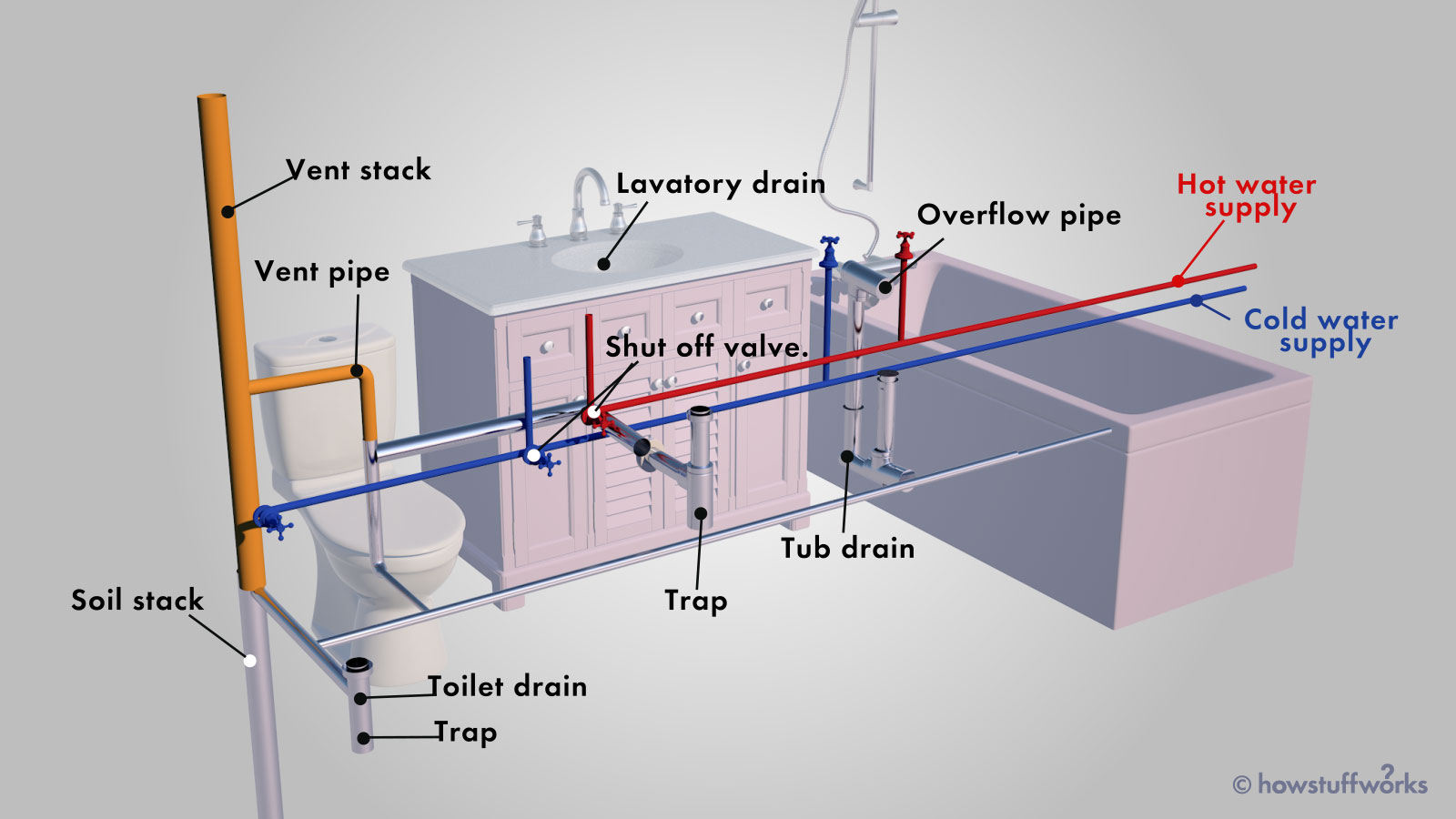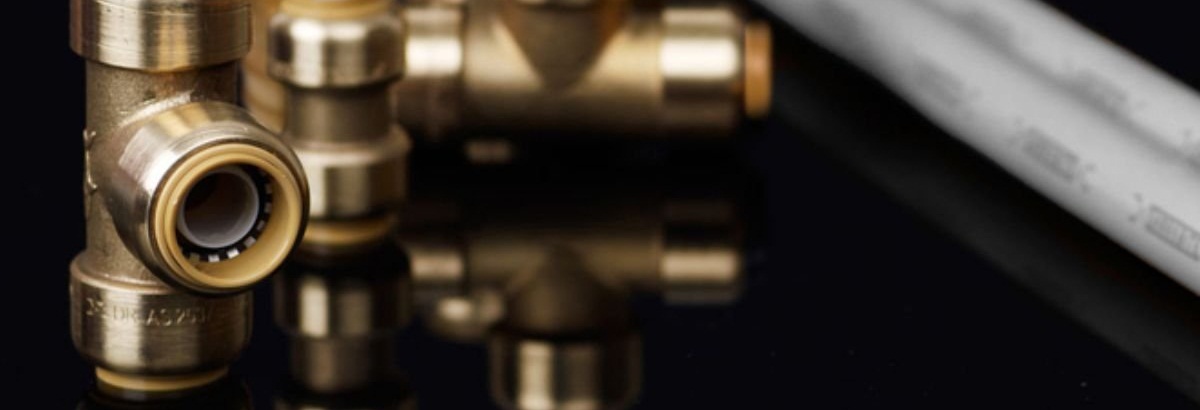Anatomy of Your House's Plumbing System: How It Matters
Anatomy of Your House's Plumbing System: How It Matters
Blog Article
We have uncovered this post relating to Plumbing Installation 101: All You Need to Know below on the internet and felt it made perfect sense to discuss it with you on my blog.

Understanding just how your home's pipes system works is essential for every single house owner. From providing tidy water for drinking, cooking, and showering to securely removing wastewater, a properly maintained plumbing system is crucial for your household's wellness and comfort. In this detailed guide, we'll explore the complex network that comprises your home's pipes and offer pointers on maintenance, upgrades, and handling usual issues.
Intro
Your home's plumbing system is more than simply a network of pipes; it's a complex system that ensures you have accessibility to tidy water and effective wastewater removal. Recognizing its components and exactly how they interact can assist you protect against pricey repairs and ensure every little thing runs smoothly.
Standard Parts of a Pipes System
Pipes and Tubes
At the heart of your plumbing system are the pipelines and tubing that lug water throughout your home. These can be made from various products such as copper, PVC, or PEX, each with its benefits in terms of durability and cost-effectiveness.
Components: Sinks, Toilets, Showers, etc.
Components like sinks, toilets, showers, and tubs are where water is made use of in your home. Comprehending exactly how these components connect to the pipes system helps in identifying troubles and preparing upgrades.
Shutoffs and Shut-off Points
Valves manage the circulation of water in your plumbing system. Shut-off shutoffs are important during emergency situations or when you require to make fixings, allowing you to isolate parts of the system without interrupting water circulation to the whole residence.
Water Supply System
Main Water Line
The main water line links your home to the municipal supply of water or a personal well. It's where water enters your home and is distributed to different components.
Water Meter and Stress Regulatory Authority
The water meter actions your water use, while a stress regulatory authority makes sure that water moves at a secure stress throughout your home's pipes system, protecting against damages to pipelines and components.
Cold Water vs. Hot Water Lines
Comprehending the distinction between cold water lines, which provide water straight from the major, and warm water lines, which bring warmed water from the hot water heater, assists in fixing and planning for upgrades.
Drain System
Drain Pipeline and Traps
Drain pipes carry wastewater away from sinks, showers, and bathrooms to the drain or septic tank. Catches avoid sewage system gases from entering your home and additionally catch particles that might cause clogs.
Ventilation Pipelines
Air flow pipelines enable air into the drainage system, preventing suction that might slow drainage and create catches to vacant. Correct air flow is vital for maintaining the honesty of your pipes system.
Value of Proper Drainage
Ensuring correct water drainage stops backups and water damages. Frequently cleansing drains pipes and preserving catches can avoid costly fixings and prolong the life of your plumbing system.
Water Heating System
Sorts Of Water Heaters
Water heaters can be tankless or typical tank-style. Tankless heating units heat water as needed, while storage tanks store heated water for immediate usage.
Upgrading Your Pipes System
Reasons for Upgrading
Updating to water-efficient fixtures or changing old pipes can improve water high quality, decrease water costs, and boost the value of your home.
Modern Pipes Technologies and Their Benefits
Discover modern technologies like wise leak detectors, water-saving commodes, and energy-efficient water heaters that can conserve cash and decrease ecological impact.
Price Factors To Consider and ROI
Calculate the upfront prices versus long-lasting savings when taking into consideration pipes upgrades. Numerous upgrades spend for themselves through reduced energy expenses and fewer repairs.
Just How Water Heaters Link to the Plumbing System
Recognizing how hot water heater link to both the cold water supply and hot water circulation lines helps in detecting problems like insufficient warm water or leakages.
Maintenance Tips for Water Heaters
Regularly flushing your water heater to get rid of debris, checking the temperature level settings, and checking for leaks can expand its life expectancy and boost energy performance.
Typical Pipes Problems
Leakages and Their Reasons
Leaks can take place because of aging pipelines, loose installations, or high water pressure. Resolving leaks without delay avoids water damage and mold and mildew growth.
Obstructions and Blockages
Blockages in drains and toilets are typically caused by flushing non-flushable things or a build-up of grease and hair. Utilizing drainpipe screens and bearing in mind what goes down your drains can protect against clogs.
Indications of Pipes Problems to Look For
Low tide pressure, slow-moving drains, foul odors, or uncommonly high water costs are indicators of potential plumbing issues that need to be dealt with immediately.
Pipes Upkeep Tips
Regular Inspections and Checks
Set up annual plumbing evaluations to capture concerns early. Look for signs of leaks, rust, or mineral build-up in taps and showerheads.
DIY Maintenance Tasks
Basic jobs like cleansing tap aerators, checking for toilet leaks utilizing color tablets, or protecting exposed pipes in chilly environments can protect against significant plumbing issues.
When to Call an Expert Plumbing Technician
Know when a pipes concern requires professional knowledge. Trying complicated fixings without correct understanding can bring about even more damages and greater repair service prices.
Tips for Lowering Water Use
Simple behaviors like taking care of leakages immediately, taking much shorter showers, and running complete lots of washing and dishes can conserve water and reduced your energy costs.
Eco-Friendly Pipes Options
Think about lasting pipes materials like bamboo for flooring, which is durable and environmentally friendly, or recycled glass for counter tops.
Emergency Preparedness
Actions to Take Throughout a Pipes Emergency situation
Know where your shut-off shutoffs are located and just how to switch off the supply of water in case of a burst pipe or significant leakage.
Value of Having Emergency Situation Get In Touches With Handy
Maintain get in touch with info for regional plumbings or emergency solutions conveniently offered for quick feedback throughout a pipes situation.
Environmental Impact and Conservation
Water-Saving Components and Home Appliances
Setting up low-flow faucets, showerheads, and commodes can dramatically minimize water usage without sacrificing efficiency.
Do It Yourself Emergency Fixes (When Applicable).
Short-lived fixes like making use of duct tape to spot a leaking pipe or positioning a container under a dripping tap can lessen damage till a specialist plumbing arrives.
Verdict.
Comprehending the anatomy of your home's pipes system encourages you to maintain it properly, conserving time and money on fixings. By complying with regular upkeep routines and remaining notified concerning contemporary plumbing modern technologies, you can ensure your pipes system operates effectively for years ahead.
Exploring Your Homes Plumbing Anatomy
Water Supply System
Main Water Line: This is where water enters your home from the municipal supply or a private well. Water Meter: Typically located near where the main water line enters the property, it measures the amount of water used. Shutoff Valve: It s crucial to know where this is in case of emergencies. It allows you to turn off the water supply to the entire house. Pipes and Fittings: These distribute water throughout your home. Materials can include copper, PVC, or PEX. Drain-Waste-Vent (DWV) System
Drains: Located in sinks, showers, and tubs, these carry wastewater away. Traps: U-shaped pipes under sinks that hold standing water, blocking sewer gases from entering the home. Vents: Pipes that lead from the DWV system to the outside, preventing vacuum formation and allowing gases to escape. Sewer Line: Carries all wastewater from the home to the municipal sewer system or a septic tank. Fixtures and Appliances
Sinks, Toilets, and Showers Dishwashers and Washing Machines Water Heaters Maintenance Tips
Regularly check for leaks in exposed pipes and around fixtures. Inspect the water heater annually for signs of wear. Clean drains and traps to prevent clogs and odors. Know how to shut off water to individual fixtures. When to Call a Professional
Major leaks or burst pipes Installation of new pipes or fixtures Septic tank issues Remodeling projects that involve plumbing changes Conclusion
Understanding the anatomy of your home's plumbing is key to maintaining a functional and efficient system. Regular checks and knowing when to call in the experts can save you time, money, and stress.
https://www.mavyn.com/blog/exploring-your-homes-plumbing-anatomy

We hope you enjoyed our section on . Thanks a ton for taking the time to read through our article post. Kindly take the time to share this blog posting if you enjoyed reading it. I recognize the value of reading our article about .
Book Your Installation Report this page